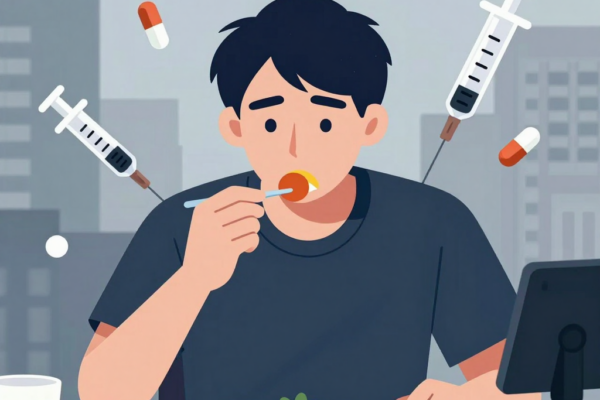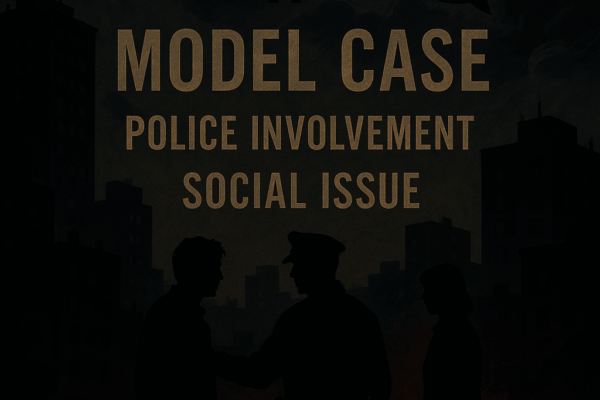The Day the Sky Turned Upside Down in St. Louis: The Historic St. Louis Tornado
In May 1896, the city was reduced to ruins in an instant. Are you ready to step into the scene of one of the deadliest tornadoes in American history and feel the shock firsthand?
St. Louis sits at the heart of Tornado Alley, a region exposed each spring to the threat of powerful tornadoes. But on May 27, 1896, the St. Louis tornado that struck this city unleashed a level of destruction unlike any disaster before it.
Estimated as a devastating EF4 by modern standards, this super-strong tornado tore through the city’s core. Winds soared at speeds up to 300 km/h, and a colossal funnel cloud stretching over 1 km wide swallowed the city whole. In just 20 minutes, St. Louis was transformed beyond recognition.
The aftermath of the St. Louis tornado was harrowing:
- 255 fatalities
- More than 3,000 injured
- Thousands of buildings demolished
- Property damage exceeding $10 million in 1896 dollars
This tragic day is etched deeply into the memory of St. Louis residents. At the same time, it alerted the entire nation to the dangers of tornadoes and acted as a catalyst for advances in weather observation technology and disaster response systems.
Today, St. Louis stands equipped with cutting-edge tornado forecasting and robust evacuation procedures, all built upon hard-earned lessons from the past. Yet, the scars left by the St. Louis tornado of 1896 remain a profound chapter in the city’s history.
Tornado Alley’s Warning Signs: How St. Louis’ Terrain Calls Forth the St. Louis Tornado
St. Louis stands as a flagship city in America’s Midwest, but it’s also infamous for its ever-present tornado risk. The Missouri and Mississippi Rivers cutting through the city, combined with the resulting humid atmosphere and extreme temperature differences, make St. Louis a hotspot for tornado supercell formation. But why do these unique geographic features amplify the chances of a St. Louis tornado?
The Convergence of Two Rivers: A Source of Moisture
Situated where the Missouri and Mississippi Rivers meet, St. Louis enjoys an abundant supply of moisture. This vast amount of humidity rises into the atmosphere, creating unstable weather conditions ideal for tornado formation.
Extreme Temperature Differences: The Catalyst for Atmospheric Instability
Another striking feature of St. Louis is its drastic temperature swings. Cold air streaming down from the north collides with warm, humid air rising from the Gulf of Mexico in the south, generating intense temperature contrasts. This clash ramps up atmospheric instability, dramatically increasing the likelihood of a St. Louis tornado.
Flat Terrain: A Conduit for Tornado Movement
The flat landscape surrounding St. Louis also plays a key role in tornado development. With no mountains or hills to obstruct powerful winds, tornadoes can roam freely, intensifying in strength and covering greater distances.
The Impact of Urbanization: The Heat Island Effect
Urbanization in St. Louis indirectly fuels tornado risks as well. Buildings and asphalt roads create a heat island effect, raising temperatures higher than surrounding areas. This temperature rise further destabilizes the atmosphere, contributing to a heightened risk for St. Louis tornadoes.
The unique blend of terrain and climate factors positions St. Louis as a vital part of Tornado Alley. Residents and meteorologists alike remain vigilant to these warning signs, continuously working to prepare for the St. Louis tornado. This deep understanding and proactive readiness will be pivotal in future disaster prevention and response.
Cities Evolve: Modern Tornado Preparedness Strategies in St. Louis
From underground shelters and Doppler radar to AI prediction models—what kinds of alerts and defenses do today’s St. Louis residents rely on? The city’s tornado preparedness strategies have undergone remarkable advancements over time.
Cutting-Edge Early Warning Systems
Modern St. Louis leverages state-of-the-art technology to tackle tornado threats:
- Doppler Radar Network: High-performance radars installed citywide detect dangerous weather patterns in real-time.
- AI-Based Prediction Models: These analyze meteorological data to forecast tornado occurrences with greater precision.
- Mobile Alert Systems: Residents receive immediate risk warnings directly on their smartphones.
Enhanced Infrastructure
The city’s physical defense mechanisms have also seen significant improvements:
- Modern Underground Shelters: Sturdy refuge spaces are integrated into public buildings and key facilities.
- Tornado-Resistant Architecture: New constructions employ specialized designs and materials to withstand powerful winds.
- Safe Public Spaces: Parks and plazas feature protective structures ready for emergency use.
Community-Centered Preparedness
Equally vital as technology and infrastructure is the readiness of the citizens themselves:
- Regular Drills: St. Louis residents actively participate in annual tornado evacuation exercises.
- Educational Programs: Continuous tornado preparedness education takes place in schools and community centers.
- Neighborhood Support Networks: Community-based emergency teams are organized to enable swift mutual aid.
St. Louis’s tornado preparedness strategy exemplifies a harmonious blend of technology, infrastructure, and community spirit. This comprehensive approach has dramatically boosted the city’s resilience and will continue to evolve. Today, St. Louis residents face tornado threats safer and more prepared than ever before.
Hidden Threats: Unexpected Danger Zones and Secondary Damage from Tornadoes in St. Louis
Skyscrapers, riverbank erosion, and even a single small tree in front of your house—the true dangers of tornadoes in the St. Louis area begin in the most unexpected places. Beyond the direct damage we typically associate with tornadoes, hidden hazards lurk throughout the city.
Downtown: Dangerous Wind Tunnels Created by the Urban Jungle
The dense concentration of high-rise buildings in downtown St. Louis exposes the area to unforeseen risks when a tornado strikes.
- Amplified Wind Speeds: Wind funnels through narrow spaces between buildings, increasing speeds by 2 to 3 times
- Increased Risk from Debris: Shattered glass and signs flying at high speeds cause secondary damage
- Risk of Structural Collapse: Domino-like building failures leading to chain collapses
Riverbank Areas: The Double Peril of Soil Erosion and Flooding
Where the Mississippi and Missouri Rivers converge near St. Louis, the tornado threat is compounded by additional hazards.
- Accelerated Soil Erosion: Intense wind and rain cause rapid erosion
- Sudden Flooding: Torrential downpours accompanying the tornado lead to swift rises in water levels
- Spread of Contaminants: Floodwaters disperse chemicals and oil from inundated areas, triggering environmental pollution
Residential Neighborhoods: Hidden Everyday Dangers
Even peaceful St. Louis suburbs face unexpected risks during tornadoes.
- Trees and Utility Poles: Fallen trees and poles block roads, hampering evacuation and rescue efforts
- Garden Ornaments: Once lovely decorations become deadly projectiles in strong winds
- Garages and Sheds: Poorly constructed outbuildings collapse, threatening damage to main homes
Preparedness: Awareness and Response to Hidden Dangers
Residents of St. Louis should take the following steps to prepare for these concealed risks:
- Regular Environmental Inspections: Identify and remove potential hazards in advance
- Strengthened Building Codes: Design and reinforce structures to withstand tornado forces
- Community Alert Systems: Enable rapid information sharing among neighbors to prevent secondary damage
The dangers of tornadoes in St. Louis go far beyond fierce winds alone. True safety is achieved only by recognizing and preparing for the unexpected risks born from the city’s structure, geography, and everyday environment.
Changing Climate, Evolving Response: The St. Louis Tornado and a Promise for Tomorrow
St. Louis’s tornado response strategy is continuously evolving. Learning from past tragedies, the city is blending technology with community power to create a safer future. But faced with new challenges brought by climate change, how is St. Louis responding?
Tornado Prediction Systems Enhanced by AI Technology
Cutting-edge AI technology is elevating St. Louis’s tornado prediction capabilities to a whole new level. Machine learning algorithms analyze vast meteorological data to forecast tornado likelihood with greater precision. This delivers precious evacuation time to residents and significantly reduces potential casualties.
- Improved prediction accuracy through real-time data analysis
- Securing response time via enhanced ultra-short-term forecasting systems
- Integrating satellite images with ground sensor data for comprehensive insights
Community-Centered Disaster Preparedness Education
St. Louis is expanding education programs to empower every citizen as an active disaster responder. Regular tornado preparedness drills in schools, workplaces, and community centers have become part of daily life.
- Age-specific tailored educational curricula
- Immersive evacuation training leveraging virtual reality (VR) technology
- Multilingual disaster information apps embracing foreign residents
Sustainable Urban Design to Minimize Tornado Damage
City planners in St. Louis are striving to build tornado-resilient urban structures. By integrating eco-friendly building technologies with smart city concepts, they are crafting infrastructures that reduce damage and ensure rapid recovery when disasters strike.
- Building arrangements designed to decrease wind speed by optimizing airflow
- Expansion and modernization of underground shelter networks
- Emergency power supply systems powered by renewable energy
Citizen-Driven Disaster Response Network
St. Louis is building a stronger disaster response system through active citizen participation. Real-time information-sharing platforms using social media and mobile apps are boosting the community’s ability to react swiftly and effectively.
- Establishing neighborhood safety check networks
- Operating citizen-led weather observation teams to enhance data gathering
- Organizing and training localized volunteer groups
St. Louis’s efforts reveal a fresh approach to tornado threats. The fusion of technological advancement, active citizen engagement, and sustainable urban design is shaping the city into a safer, more resilient place. Learning from past tragedies, St. Louis is evolving to face the challenges of tomorrow—offering not just a response to tornadoes, but a promising model for urban survival and prosperity amid a changing climate.




